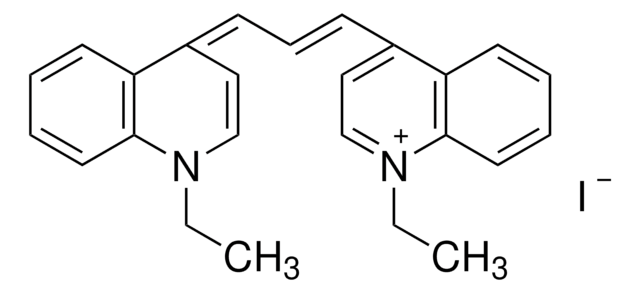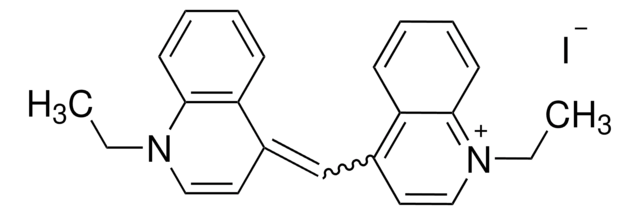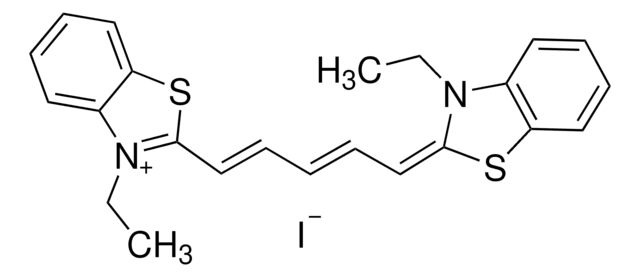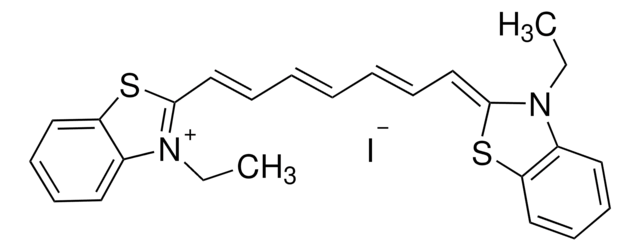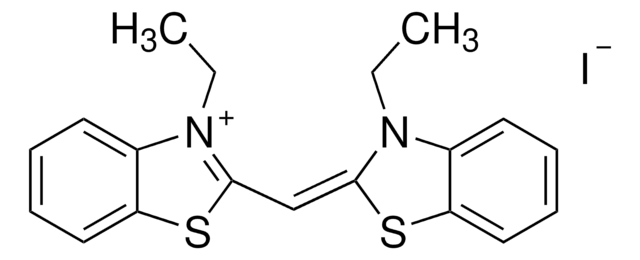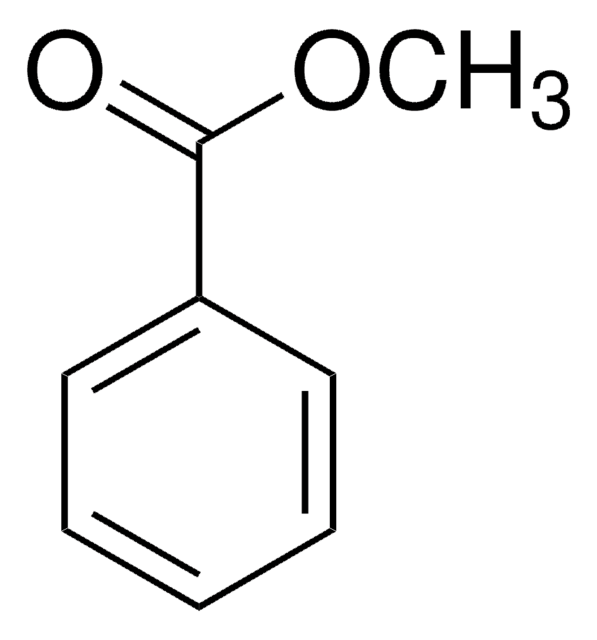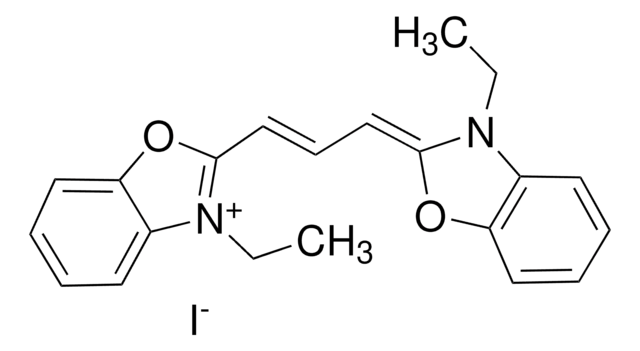323764
1,1′-Diethyl-2,2′-cyaniniodid
97%
Synonym(e):
1-Ethyl-2-[(1-ethyl-2(1H)-chinolinyliden)-methyl]-chinoliniumiodid
About This Item
Empfohlene Produkte
Qualitätsniveau
Assay
97%
Form
powder or crystals
mp (Schmelzpunkt)
273 °C (dec.) (lit.)
λmax
524 nm
ε (Extinktionskoeffizient)
≥25000 at 487-495 nm in ethanol
Anwendung(en)
diagnostic assay manufacturing
hematology
histology
Lagertemp.
room temp
SMILES String
[I-].CCN1\C(C=Cc2ccccc12)=C\c3ccc4ccccc4[n+]3CC
InChI
1S/C23H23N2.HI/c1-3-24-20(15-13-18-9-5-7-11-22(18)24)17-21-16-14-19-10-6-8-12-23(19)25(21)4-2;/h5-17H,3-4H2,1-2H3;1H/q+1;/p-1
InChIKey
GMYRVMSXMHEDTL-UHFFFAOYSA-M
Verwandte Kategorien
Allgemeine Beschreibung
Anwendung
Signalwort
Danger
Gefahreneinstufungen
Acute Tox. 2 Inhalation - Acute Tox. 2 Oral - Acute Tox. 4 Dermal - Eye Irrit. 2 - Skin Irrit. 2 - STOT SE 3
Zielorgane
Respiratory system
Lagerklassenschlüssel
6.1A - Combustible acute toxic Cat. 1 and 2 / very toxic hazardous materials
WGK
WGK 3
Flammpunkt (°F)
Not applicable
Flammpunkt (°C)
Not applicable
Persönliche Schutzausrüstung
Eyeshields, Faceshields, Gloves, type P3 (EN 143) respirator cartridges
Hier finden Sie alle aktuellen Versionen:
Besitzen Sie dieses Produkt bereits?
In der Dokumentenbibliothek finden Sie die Dokumentation zu den Produkten, die Sie kürzlich erworben haben.
Kunden haben sich ebenfalls angesehen
Unser Team von Wissenschaftlern verfügt über Erfahrung in allen Forschungsbereichen einschließlich Life Science, Materialwissenschaften, chemischer Synthese, Chromatographie, Analytik und vielen mehr..
Setzen Sie sich mit dem technischen Dienst in Verbindung.

